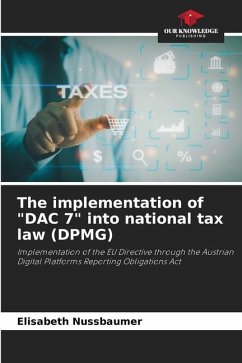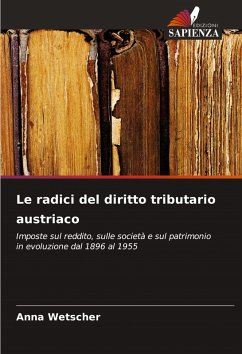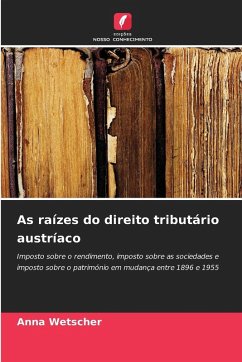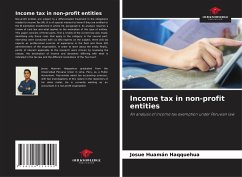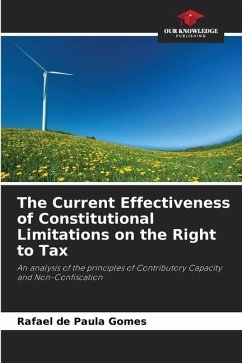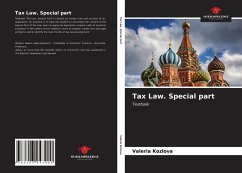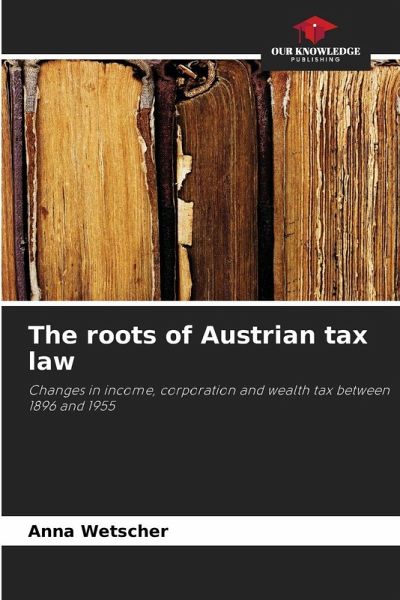
The roots of Austrian tax law
Changes in income, corporation and wealth tax between 1896 and 1955
Versandkostenfrei!
Versandfertig in 6-10 Tagen
30,99 €
inkl. MwSt.

PAYBACK Punkte
15 °P sammeln!
This paper attempts to provide a detailed overview of legislation from 1896 to 1955, covering a broad spectrum from tax law after 1945 to tax law since 1896. It is by no means intended to be a treatise on legal theory or to analyse the necessity of taxation per se. Instead, it outlines the actual development of the three major taxes - income tax, corporation tax and wealth tax - over time. This is because the integration of tax law into the economic and legal structure of the state is much more important than its theoretical basis. And it was precisely this structure that was often the subject...
This paper attempts to provide a detailed overview of legislation from 1896 to 1955, covering a broad spectrum from tax law after 1945 to tax law since 1896. It is by no means intended to be a treatise on legal theory or to analyse the necessity of taxation per se. Instead, it outlines the actual development of the three major taxes - income tax, corporation tax and wealth tax - over time. This is because the integration of tax law into the economic and legal structure of the state is much more important than its theoretical basis. And it was precisely this structure that was often the subject of heated debate in the 20th century. From the abdication of the emperor at the end of the First World War to a democratic form of government and, within a very short period of time, to a Führer state, the form of government and tax law were mostly caught in a phase of transition. If one measures the development of tax law against the yardstick of history, the events do not always correspond. Rapid change often condemned tax law to react to social, political or economic realities rather than actively shaping them.





